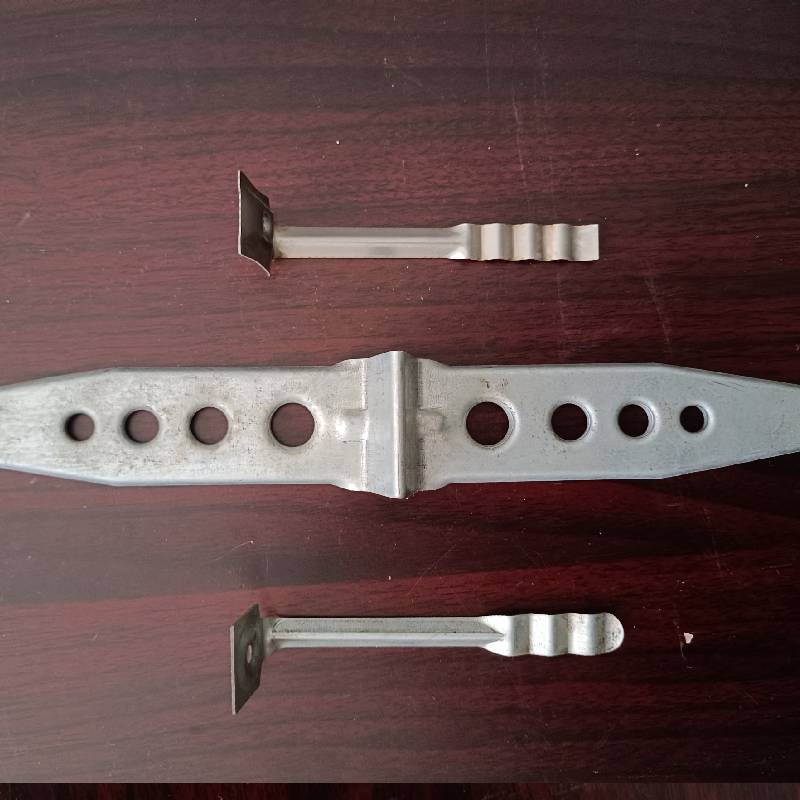
- Mobile Phone
- +8613931874955
- sales@cntcmetal.com
types of masonry ties
Understanding the Various Types of Masonry Ties
Masonry ties, also known as wall ties, play a crucial role in the construction and stability of masonry structures. They are integral components that provide lateral support, ensuring that materials such as brick, block, and stone withstand environmental stresses. In this article, we will explore the various types of masonry ties, their functions, and the materials used in their construction.
What are Masonry Ties?
Masonry ties are typically metal connecters used to bind masonry walls to other structural elements, such as steel frames or other masonry walls. Their primary function is to enhance the structural integrity of buildings by transferring loads and countering lateral movements caused by wind, seismic activities, or thermal expansion. A well-designed masonry tie system will ensure that walls remain aligned and maintain the building's overall stability.
Types of Masonry Ties
1. Brick Ties Brick ties are commonly used to connect brick walls to a backup wall, which can be made of concrete or masonry blocks. They can be single or double, depending on the wall's thickness. Brick ties are typically made from galvanized steel to resist rust and corrosion.
2. Lateral Load Ties These ties are designed to provide additional support against lateral forces. They are essential in areas prone to severe weather conditions or seismic activity. Lateral load ties help in distributing the force throughout the wall, thus preventing bowing or cracking.
3. Corrugated Ties Made from a flexible metal strip with a corrugated profile, these ties allow for slight movements between the masonry elements while still providing the necessary support. Their design helps in accommodating thermal expansion and contraction, making them particularly useful in climates with extreme temperature variations.
4. Dovetail Ties These ties are designed with a unique dovetail shape that helps in locking the brick or block into place. This design provides enhanced resistance to vertical and lateral forces, making it ideal for taller structures where stability is critical.
types of masonry ties

5. Expansion Ties As the name suggests, expansion ties cater to the thermal expansion of masonry materials. They often feature a spring mechanism that allows for movement while still securing the wall system. These are particularly useful in areas with fluctuating temperatures.
6. Furring Ties Furring ties are used to attach furring strips to masonry walls, which can then be used to hold additional finishing materials. They are critical in creating a space for insulation and ensuring that the final aesthetic of the wall remains intact.
Materials Used in Masonry Ties
Masonry ties come in various materials, each chosen based on the specific requirements of the project. Common materials include
- Galvanized Steel This is the most prevalent material due to its strength and resistance to rust. Galvanization involves coating the steel with zinc, providing a robust barrier against corrosion.
- Stainless Steel For environments that may be more corrosive, such as coastal areas, stainless steel ties are preferred due to their superior resistance to rust and oxidation.
- Plastic and Composite Materials These ties are gaining popularity due to their lightweight nature and resistance to corrosion. Although they may not be as strong as metal ties, they are often used in low-load situations or for internal applications.
Conclusion
Choosing the right type of masonry tie is fundamental to the long-term success and safety of a masonry structure. With various options available, ranging from brick ties to expansion ties, builders can select the appropriate solutions based on structural demands and environmental conditions. Understanding the types of masonry ties and their role in construction can help ensure the integrity and durability of buildings for years to come.
share:
-
Why Sacrificial Formwork Is Redefining Underground ConstructionNewsJun.06,2025
-
The Structural Dynamics of Modern Concrete: How Snake Spacers Revolutionize Flexible ReinforcementNewsJun.06,2025
-
Snake Spacers Smart-Lock Concrete Reinforcement with Surgical PrecisionNewsJun.06,2025
-
Snake Spacers: Reinforcement Precision for Modern Concrete ProjectsNewsJun.06,2025
-
Snake Spacers Powering Concrete's Structural DNANewsJun.06,2025
-
Slither into Success: Snake Spacers' Precision Bite for Unbreakable ReinforcementNewsJun.06,2025
-
Sacrificial Formwork: Building Stronger, Faster, and Safer StructuresNewsJun.06,2025



















